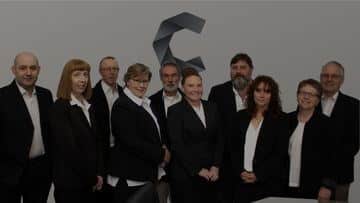Superannuation is one of those things many of us tend to “set and forget”. However, staying up to date each year with budgetary, market and industry trends and changes is imperative if you want to maximise the return on your super in the long-run. With the 2016 budget reforms to superannuation starting to come into effect this financial year, on top of the changes announced by the ATO in 2017, now is the ideal time to review your super.
Looking to retire in the next 12 months?
From the start of July 1st, 2019, anyone with a total super balance (TSB) below $300K who is between 65-74 years old, will be able to make voluntary contributions for a twelve-month period from the date they last failed the work test. In other words, once you have finished work, you will be able to make voluntary contributions for an additional twelve months. It’s a good idea, therefore, to plan now to be able to maximise this opportunity with any other funds you may have in 2019.
Catch-up Concessional Contributions.
Concessional contributions are pre-tax contributions to your super fund. Most employees and self-employed can take advantage of tax concessional super contributions up to a $25,000 cap. As of the 1st of July this financial year, if your total superannuation balance is under $500K, you can start accumulating any unused portion of your super contributions from the past five years. For example, if this financial year you make $20,000 in concessional contributions, you’ll be able to roll over the $5,000 you didn’t contribute this year into the next financial year, or future years. Just ensure you send a notice of intent. You can get more clarification to see if you’re eligible here.
The Bring – Forward Arrangement.
Investors under the age of 65 can make non-concessional contributions (without any tax offset benefits) up to three times the annual non-concessional contributions gap amount in any given year. This can be done by either bringing forward the non-concessional cap for a two or three- year period dependent upon when finances are readily available. When you make any contributions that are higher than the annual cap you automatically get to access the concurrent year’s cap. Note, that this is reliant upon your TSB being below $1.5M at the end of the previous financial year.
Self Managed Super Funds (SMSF).
While there aren’t any significant financial impacts for SMSF’s at a policy level this year, there are some slight changes that might make life a little easier.
- As of July 1st this year, you can now have up to six members instead of four in your in your SMSF. This is particularly advantageous for family businesses and larger families.
- From July 1st 2019, trustees with three consecutive years of clear audit reports and lodgements will now be audited every three years rather than annually. This is a cost saving for you and a time saver for trustees.
- Superstream now allows SMSF members to electronically rollover any money from mainstream superannuation funds to SMF electronically.
First Home Super Saver Scheme.
As of the start of this financial year, people can apply for the release of any voluntary concessional and non-concessional contributions and consequent earnings to help pay a deposit on their first home. You can apply to get access to $15,000 in voluntary contributions and associated earnings in any given year up to a cap of $30,000.
Downsizer Contributions.
Anyone who is 65 or over and has owned a house for ten years consecutively will be able to boost their super savings this financial year if they sell their house and invest the proceeds up to $300K as a single or $600K as a couple into their super fund. This once-off contribution can be made regardless of TSB, age or current work status. By taking some time now to review your superannuation strategy with your account and financial advisor you can make some significant contributions to your superannuation balance in the long run. Book an appointment now on (insert number) to discuss how we can help you achieve your super goals in the long run.





















